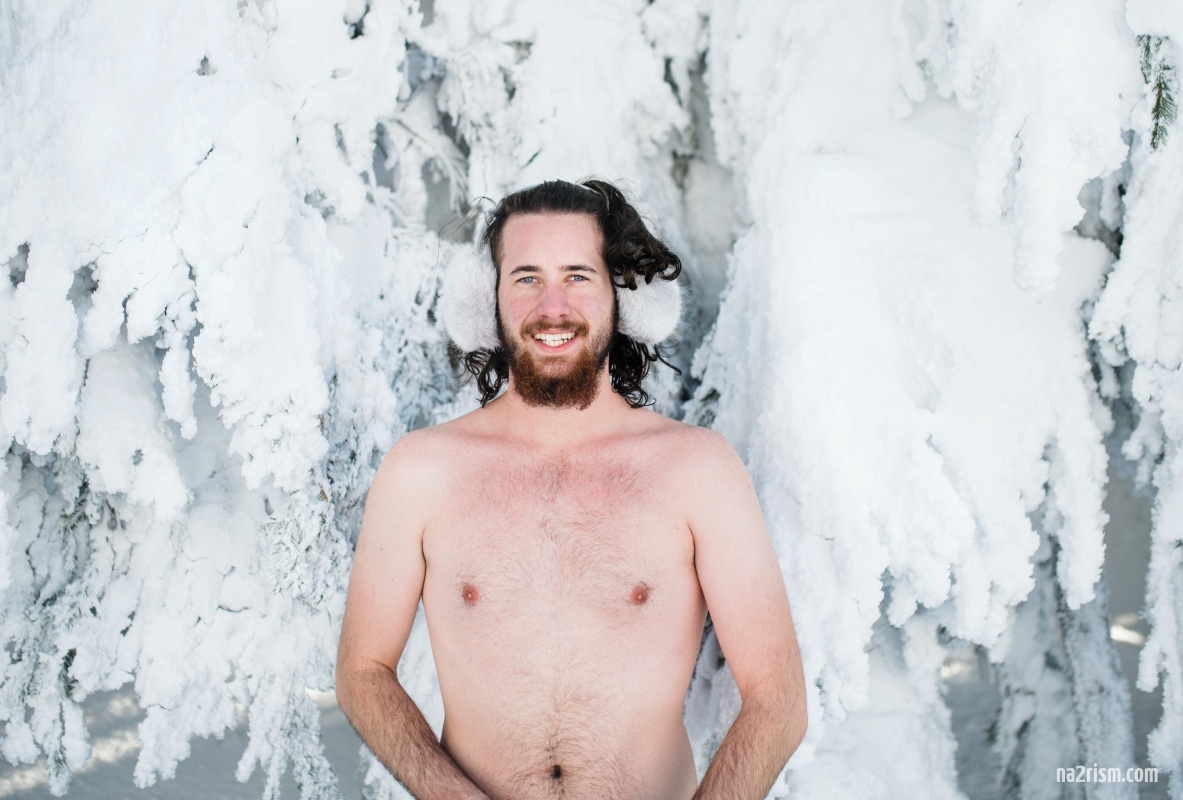Naturism, traditionally associated with sun-soaked beaches and warm summer days, presents a unique set of challenges and opportunities when practiced in colder climates. This phenomenon, though less common, offers a fresh perspective on the naturist lifestyle, focusing on resilience, community, and the deepened connection with nature that can occur even in the chill of winter.
Understanding the appeal
The appeal of naturism in cold climates might not be immediately apparent, yet it is profoundly meaningful for its practitioners. Cold-weather naturism is less about the comfort of warm weather and more about embracing the natural environment in all its forms. It represents a challenge to the body and spirit, offering an exhilarating experience that strengthens one’s connection to the natural world. The crisp air and the stark landscapes provide a refreshing contrast to the typical settings of naturism, enhancing mindfulness and presence.
Physical and health challenges
The primary challenge of cold climate naturism is, undoubtedly, the cold itself. Human bodies are not naturally equipped to handle prolonged exposure to cold temperatures without clothing. Hypothermia and frostbite are serious risks if proper precautions are not taken. Naturists in colder regions often engage in activities that help raise their body temperature naturally, such as brisk walking, running, or even yoga. Saunas and hot springs also play a crucial role in these settings, offering a warm refuge that supports a healthy and sustainable practice of naturism.
Adapting to the cold also involves a psychological component; it requires a mental toughness and a willingness to step out of one’s comfort zone. Regular exposure to cold can, over time, help acclimatize the body, known as cold conditioning. This not only makes the experience more bearable but also invigorates the body’s circulatory system and enhances immune response.
Environmental interactions
Naturism in cold climates encourages a different type of interaction with the environment. Snowy landscapes and frozen lakes offer unique recreational opportunities such as snowshoeing, ice swimming, and winter hiking. These activities not only provide the physical activity needed to stay warm but also allow naturists to appreciate the beauty of nature in its more dormant, serene state.
Furthermore, engaging with the environment in such an intimate manner can foster a greater appreciation for the earth’s cycles and seasons. It highlights the importance of environmental stewardship and sustainability, as practitioners become acutely aware of nature’s balance and their place within it.
Social and cultural dimensions
Culturally, naturism in colder climates also challenges societal norms about the human body and its capabilities. It provides a platform for discussions about body positivity and resilience that are often overshadowed by the more hedonistic images associated with naturism. Communities in colder regions tend to be tightly-knit, with a strong sense of mutual support and camaraderie, which is essential for dealing with the harsher conditions.
Moreover, these communities often celebrate their unique lifestyle through festivals and gatherings that emphasize creativity, music, and art, all inspired by their distinctive environment. These events not only bring naturists together but also invite non-naturists to understand and perhaps embrace this way of life.
While naturism in cold climates comes with its set of challenges, it also offers substantial rewards. It pushes the boundaries of traditional naturist practices and encourages practitioners to explore new horizons of personal and communal growth. By embracing the cold, naturists develop a robust resilience and gain a deeper appreciation for nature’s diversity. As this niche of naturism continues to grow, it reflects a broader, more inclusive understanding of what it means to connect with the natural world and with one another.


Lots of idealism in those paragraphs. Maybe okay for younger adults. Seniors like me find winter cold challenging, and being undressed is more difficult. When I must be out and about, I generally wear a kilt and layer my upper garments to keep warm, plus my footwear and sometimes longer socks. (Hips, genitals, and butt don’t particularly get cold if the temperature is above 10 degrees Fahrenheit or -12 degrees Celsius.) Inside, however, is more critical. Unless there is a warm fire or stove to stand near, or a bath or hot tub to immerse in, the air needs to be around 73 degrees to be sustainable while nude for hours. Heat bills are higher but clothing and laundry bills lower; it seems to balance. As i write at my desk, it’s 74 degrees, I’m absolutely naked, and it’s great!
Good post.
Just because you are a nudist/naturalist or whatever you call yourself, you don’t have to be naked every minute of every day. There is no law that says if you like to be naked that you have to be naked all the time. You especially don’t have to be naked if you are uncomfortable. As the previous poster said, “Lots of idealism in those paragraphs.” If you want to be naked in the cold, strip off and go for it. If you are like me, sure, I’d rather be naked, but if I’m cold, I put clothes on, simple. I also don’t like to sweat, so when I do, I put on shorts and a t-shirt. Being naked is not the first priority in my life, and when I can be naked, it’s just a perk.
I have read a lot of the articles on this site, and they are all written by people who support nudism (naturally) but you must remember, they will say anything to support their position. No different than anyone else I guess. But just because you write a nice piece (and I see some evidence that whoever is writing these is using some kind of AI program to do it) does not mean that everything they claim is true. There is a lot of mumbo-jumbo in these articles. Just admit, we like to be naked, not everyone in the world wants to be naked. Be respectful and don’t push your agenda on anyone. Locate others that want to be naked and get together. Easier said than done in some areas, like Texas where I live.